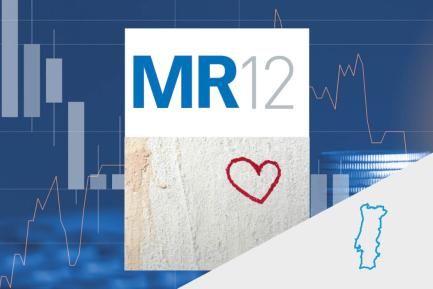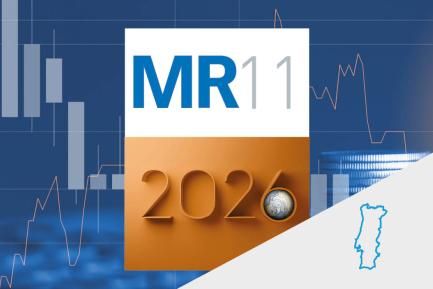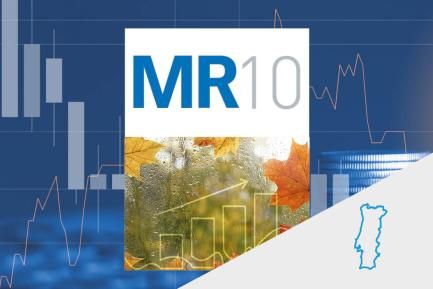
Portugal: record vaccination drives the recovery
The recovery is progressing, but the GDP revision postpones the milestone of reaching pre-COVID levels
The National Statistics Institute has revised the data for Portuguese GDP, which indicate an 8.4% contraction in 2020, more accentuated than in the previous forecast (–7.6%). This revision is driven by the fact that the pandemic has had a greater impact than initially estimated on the accommodation and catering sector, as well as on transportation and storage. The revised data also suggest lower household consumption, lower investment and lower imports in 2020. Similarly, the economic recovery in Q2 2021 was less pronounced than initially anticipated (4.5% quarter-on-quarter, instead of 4.9%). With these revisions, our expectation is that GDP will not recover to pre-COVID levels until the end of 2022 (previously, by mid-2022). However, the outlook remains positive: the Bank of Portugal’s daily economic indicator reveals a narrowing of the gap compared to the end of 2019 of around 2%, while the vaccination roll-out is virtually complete (84% of the population is fully vaccinated) and the plan for the lifting of restrictions has entered its final phase. At present, face masks are only mandatory in certain places (such as on public transport), the digital certificate is no longer required to enter restaurants or accommodation establishments, and all establishments can now open.

Household consumption grows, supported by the labour market and savings
Private consumption has made a notable recovery in Q2, reaching only 2.9% below the level of the end of 2019 (–9.5% in Q1) – a recovery sustained by the consumption of durable goods. This is in line with expectations, as the pandemic and the resulting mobility restrictions, as well as a context of greater uncertainty, led to a considerable increase in household savings. It therefore comes as no surprise that the easing of the lockdown and the recovery of employment levels (this August employment exceeded the level of August 2019 by 0.7%) are helping to generate greater confidence, which is reflected in the latest indicators. More specifically, consumer confidence increased in September for the second consecutive month bringing it close to the levels of the end of 2019, driven by a more positive outlook for the financial situation of both households and the country. At the same time, card payments continue to exceed pre-COVID values: in August, they registered a 5.7% increase over August 2019.

The real estate market remains strong
In Q2 there were 52,855 home sales, 24% more than in the same period of 2019, and prices accelerated relative to the first three months of the year, registering a year-on-year change of 6.6% (5.2% in Q1). In turn, more recent indicators such as bank valuations and price changes calculated by Confidencial Imobiliário suggest that in Q3 the rate of price growth will remain high, albeit somewhat more moderate than in Q2. The strength of the market will be supported by the potential increase in demand from non-residents, given the imminent end of the Golden Visa programme in major urban centres (according to Google Trends, the popularity of housing searches in Portugal is increasing), together with the highly favourable financing conditions and the moderate increase in supply.

The tourism sector registers a record number of overnight stays by residents in August
According to National Statistics Institute data, in August Portugal reached the highest number of overnight stays by resident tourists since records began (4.2 million). This number reiterates what had already been observed in recent months: that resident tourism is the major driving force behind the recovery of national tourism activity. Compared to July, the total number of guests rose by 54.7%. The total number of overnight stays in July and August exceeds even the total number of overnight stays in all of Q3 2020. The cumulative number of guests from January to August is also higher than it was in 2020, albeit still 58% below the value for the same period of 2019. At the same time, the number of flights at domestic airports in September was 49% higher than in the same month of 2020 and only 8% lower than in August. This indicator usually evolves in parallel with non-resident tourism, hinting that September could still be strong in this field.

The public accounts remain infected by the pandemic
The unprecedented state intervention to protect households and businesses from the most devastating economic effects of the pandemic continues to be reflected in the public accounts, with general government debt reaching 274,585 million euros in July (+3.7% year-on-year). This is equivalent to 130.9% of GDP, but it is still a 4.3-pp reduction compared to the end of 2020. The deficit up to August, meanwhile, deteriorated to 4.9% of GDP (4.7% in the same period of 2020) as expenditure grew by more than income (+5.1% and 4.7%, respectively). The measures introduced to combat the COVID-19 crisis reached 2.9% of GDP in August (4,052 million euros). Those affecting current transfers (such as the simplified lay-off scheme) continue to have the biggest impact, accounting for more than 41% of the total of all COVID-related measures up to August.

Moratoria coming to an end
In August, the total sum of loans under moratorium amounted to 36,339 million euros. Loans to individuals under moratorium represented 11.1% of the total stock of credit in this segment, rising to 28.5% in the case of loans to companies. By economic sectors, moratoria granted to the accommodation and catering sector represent the largest group. It should be recalled that the moratoria currently in force ended at the end of September, but a smooth transition to the resumption of regular payments is anticipated. Indeed, the state has set up a 1-billion-euro credit facility which will allow a portion of the credit currently under moratoria but not restructured to be guaranteed. The banks have also been in close contact with customers in order to anticipate any potential difficulties.



